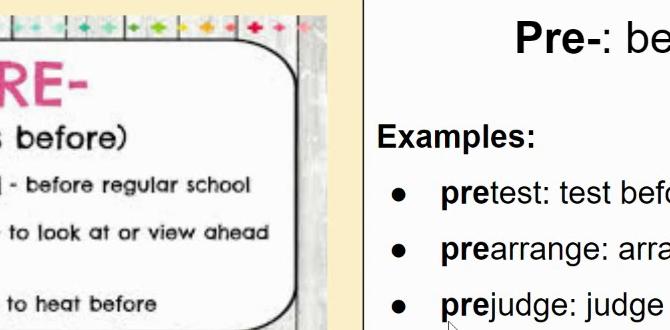Quick Summary:
Nail gun air leaks? Don’t worry! This guide offers proven fixes for common issues like worn O-rings, loose fittings, or faulty valves. We’ll walk you through simple, step-by-step solutions to get your nailer firing strong again, saving you time and frustration.
Hey there, DIY enthusiasts and budding woodworkers! Jack Shaffer, your friendly neighborhood Nailerguy, here. We’ve all been there – you’re mid-project, ready to drive a nail, and your trusty nail gun starts hissing like a leaky balloon instead of booming with power. Air leaks are super common, and honestly, a bit frustrating. But here’s the good news: most can be fixed with a little know-how and a few simple steps. You don’t need to be a tool wizard to sort this out.
This guide is all about getting your air-powered buddy back in tip-top shape. We’ll break down the common culprits behind those annoying leaks and give you straightforward fixes. Ready to silence that hiss and get back to building? Let’s dive in!
Table of Contents
Why Is My Nail Gun Leaking Air? Understanding the Usual Suspects
When your nail gun starts to lose air pressure, it’s usually a sign that something isn’t sealing as tightly as it should. Think of it like a leaky faucet; eventually, the drip becomes a steady stream. For nail guns, this means less power per shot, potential misfires, or the compressor running more often than it needs to. The good news is that these issues are often due to wear and tear on common, easily replaceable parts.
The most frequent reasons for air leaks boil down to a few key areas:
- Worn-out O-rings and Seals: These rubber rings are like the gaskets in your car’s engine. They create a tight seal between moving parts. Over time, they can dry out, crack, or get compressed, allowing air to escape.
- Loose Fittings and Connections: The air hose, coupler, and any adapters need to be snug. If they’re not, air will find its way out.
- Damaged or Dirty Components: Grit, dust, or a small impact can damage parts like the nosepiece or the exhaust port, creating tiny gaps.
- Faulty Valve System: The internal valve is what controls the flow of air to drive the nail. If it’s stuck, dirty, or damaged, air can leak past it.
- Problems with the Air Hose: A nick, cut, or kink in your air hose can be a direct path for air to escape.
Nailerguy’s Essential Toolkit for Dealing with Air Leaks
Before we start fixing things, let’s gather our supplies. You don’t need a full-blown mechanic’s shop, just a few handy items. Having these ready will make the troubleshooting process smooth and efficient.
Here’s what you’ll want to have on hand:
- Safety Glasses: Always protect your eyes, especially when working with compressed air tools.
- Gloves: To keep your hands clean and protected.
- Screwdriver Set: You might need a Phillips or flathead for disassembling certain parts.
- Pliers: For gripping and holding small parts.
- Allen Wrench Set: Some nailers use hex screws.
- Contact Cleaner or Degreaser: To clean internal parts.
- Lubricant (Nailer-Specific): For keeping moving parts running smoothly. Some manufacturers recommend specific lubricants. Check your manual!
- Replacement O-rings and Seals Kit: It’s a good idea to have a kit for your specific nailer model.
- Teflon Tape (Pipe Thread Tape): For sealing threaded connections.
- Shop Towels or Rags: For cleaning up.
- Air Compressor with Gauge: To check pressure and test your nailer.
- Your Nailer’s User Manual: This is your best friend for model-specific details!
Step-by-Step Guide: Troubleshooting Common Nail Gun Air Leaks
Let’s get to the heart of the matter. When your nail gun is leaking air, the best approach is to start with the simplest checks and work your way up. This systematic method helps you pinpoint the problem without unnecessary disassembly.
Step 1: The Quick Listen Test (Before You Disassemble Anything!)
This is your first line of defense. Disconnect the air hose from the nailer (very important for safety!). Then, connect your air compressor and set it to a moderate pressure (e.g., 70-90 PSI, but always check your manual for recommended operating pressure). Listen very carefully.
Where do you hear the air escaping?
- From the air inlet fitting: Air might be blowing out where the hose connects.
- From the nosepiece: This is where the nail is deployed.
- From the exhaust port: This is usually at the top or side of the gun.
- From somewhere else on the body: A general hiss.
This initial “listening tour” will give you a big clue about where to focus your troubleshooting efforts.
Step 2: Checking the Air Hose and Coupler Connection
This is often the simplest fix. Air leaks here are usually not the result of the nail gun itself, but the connection point.
- Inspect the Air Hose: Look for any visible damage, cracks, or kinks along the entire length of the hose. A damaged hose needs to be replaced.
- Check the Coupler: Ensure the quick-connect coupler on the end of your air hose is clean and functioning correctly. Sometimes, debris can prevent it from sealing tightly with the nailer’s fitting.
- Verify the Connection: Push the coupler firmly onto the nail gun’s air inlet fitting. You should hear a distinct “click” when it’s fully seated.
- Inspect the Nailer’s Inlet Fitting: Look for any damage or debris on the fitting attached to the nail gun. If it looks damaged or feels loose, it might need to be tightened or replaced.
- Apply Teflon Tape: If the fitting on the nailer (or any adapter you’re using) is threaded, remove it (if possible and safe to do so), clean the threads, and reapply Teflon tape. Wrap it clockwise around the threads a few times. This helps create a watertight seal for threaded connections.
Step 3: Examining the Nosepiece and Piston Seal
The nosepiece is where the magic happens – the nail is driven out here. If there’s a leak here, it often points to issues with the piston seal or the nosepiece assembly itself.
Important Safety Note: Before attempting to access internal parts like the piston seal, ALWAYS disconnect the air supply and discharge any residual air from the tool. You can do this by holding the trigger down while the air is disconnected.
- Visual Inspection of the Nosepiece: Look closely at the area where the nail exits. Is there any visible damage, cracks, or hardened debris? Clean it thoroughly.
- Accessing the Piston Seal: This usually involves removing the nosepiece assembly. Refer to your user manual for specific instructions for your model. You might need a screwdriver or Allen wrench.
- Inspect the Piston Seal: Once the nosepiece is off, you’ll likely see the piston and its associated O-ring or seal. Gently remove the old O-ring. Feel for any nicks, cracks, or signs of hardening and degradation.
- Replace the O-ring: If the O-ring looks worn, replace it with a new one of the exact same size. It’s often advisable to replace O-rings preventatively if they look worn, even if there isn’t a major leak. Lubricate the new O-ring with a small amount of nailer-specific oil before installation.
- Clean Internal Components: While you have it open, use contact cleaner to gently clean the piston and the inside of the cylinder it operates in. Ensure all debris is removed.
- Reassemble Carefully: Put the well-lubricated O-ring and nosepiece back together, ensuring all screws are snug but not overtightened.
Step 4: Investigating the Exhaust Port Leak
If you hear air escaping from the exhaust port (usually on top of the gun), it often means the exhaust valve isn’t sealing properly. This valve directs the used air out after each shot.
Safety First: Disconnect air supply and discharge residual air.
- Locate the Exhaust Port: This is typically a small opening on the top or side of the nailer.
- Clean Thoroughly: Use a brush or compressed air to blow out any dust, sawdust, or debris that might be lodged around and inside the exhaust port.
- Check for Obstructions: Sometimes a small piece of debris can prevent the valve from closing fully. Ensure nothing is visibly stuck.
- Internal Valve Mechanism (More Advanced): If cleaning doesn’t help, the issue might be internal. This could involve a valve seal or the valve piston itself. Accessing this can be more complex and might require referring to your manual for a deeper teardown. Some models have replaceable valve assemblies or seals that are accessible with basic hand tools. If you’re not comfortable with this level of disassembly, it might be time to consult a professional repair service or the manufacturer.
Step 5: Addressing Leaks from the Trigger Assembly or Body
If you hear air hissing from the trigger area or elsewhere on the body of the nail gun, this can indicate a breach in the internal seals or housing.
- Clean the Trigger Area: Debris can sometimes affect the trigger mechanism. Gently clean around the trigger.
- Check for Cracks in the Housing: Inspect the plastic or metal body of the nailer for any signs of cracks or damage. A dropped tool can easily develop a leak this way.
- Internal Seal Issues: Most leaks coming from the body or trigger area relate to internal seals that have degraded or fittings within the tool that have come loose. This often requires disassembling the main body of the nailer.
- Consult Your Manual for Disassembly: Your user manual is critical here. It will show you which screws to remove and the order in which to do so to access internal components like the main piston and valve assembly.
- Lubricate and Replace Seals: As you disassemble, look for any O-rings or seals that appear worn, cracked, or flattened. Replace them with exact matches and lubricate them before reassembly.
- Tighten Internal Fittings: While the tool is open, gently check if any internal fittings or screws have become loose. Tighten them carefully.
Step 6: The “Soapy Water” Trick for Pinpointing Leaks
If you’re having trouble hearing exactly where the air is escaping, a simple solution is to use soapy water. This is particularly useful for smaller, harder-to-locate leaks.
- Prepare the Solution: Mix a good amount of dish soap with water in a spray bottle or a small bowl.
- Slightly Pressurize the Nailer: Connect the air hose, but only to a very low pressure (barely enough to detect a leak). Make sure the air supply is DISCONNECTED before applying.
- Apply the Soapy Water: Spray or dab the soapy water mixture generously over the suspected leak areas: the air inlet, the nosepiece seams, the exhaust port, and any body seams.
- Watch for Bubbles: If there’s a leak, the air escaping will push through the soapy water and create tell-tale bubbles. The more bubbles, the bigger the leak.
- Act on the Findings: Once you’ve identified the exact spot of the leak, you can proceed with the specific repair steps for that area.
Preventative Maintenance: Keep Air Leaks at Bay!
The best way to deal with air leaks is to avoid them altogether! A little preventative maintenance goes a long way in keeping your nail gun in perfect working order.
Here are some tips to keep your nailer happy:
- Regular Lubrication: Use the type and amount of lubricant recommended by the manufacturer. A few drops after a day of use (or as per your manual) can keep seals supple and moving parts smooth. Check out resources like the Occupational Safety and Health Administration (OSHA) for general safety guidelines around pneumatic tools.
- Keep it Clean: Dust, sawdust, and grime are enemies of moving parts and seals. Wipe down your nail gun after each use. Store it in a clean, dry place.
- Inspect Hoses and Fittings Regularly: Before you start any project, give your air hose and fittings a quick once-over. Look for wear and tear.
- Use the Correct Air Pressure: Running your nailer at too high a pressure can overwork seals and internal components, leading to premature wear and leaks. Always stick to the manufacturer’s recommended PSI range. Your compressor gauge is your friend here!
- Don’t Force It: If a nail gets jammed, don’t keep hammering away, trying to force it. Stop, clear the jam carefully, and then resume. Forcing can damage the nosepiece or internal mechanisms.
- Store Properly: When storing your nail gun, especially for longer periods, ensure it’s clean and dry. Some manuals advise releasing residual air or disconnecting the hose.
Common Nail Gun Troubleshooting Scenarios & Solutions
Let’s look at some specific issues and their likely fixes to make things even clearer. This table summarizes frequent problems and the best approach.
| Symptom | Likely Cause | Recommended Fix |
|---|---|---|
| Hissing from the air inlet when disconnected. | Loose or damaged air inlet fitting; faulty coupler. | Tighten fitting, reapply Teflon tape if threaded. Inspect and clean coupler. Replace coupler if damaged. |
| Weak nail drive or nail not fully seating. | Low air pressure; leaky piston seal; internal valve issue. | Check compressor pressure gauge. Inspect and replace piston O-ring/seal. Check and clean internal valve. |
| Air blowing out of the nosepiece after firing. | Worn piston seal; damaged cylinder wall. | Replace piston seal/O-ring. If cylinder wall is damaged, professional repair may be needed. |
| Continuous hissing from exhaust port. | Exhaust valve not sealing; debris in valve assembly. | Clean exhaust port and check for debris. Disassemble and clean valve assembly. Replace valve parts if necessary. |
| Nail gun fires erratically or not at all, with air escaping. | Internal valve stuck or damaged; critical seal failure. | Disassemble main body, clean and inspect valve and piston assembly. Replace any worn seals or faulty valve components. |
Frequently Asked Questions (FAQs) About Nail Gun Air Leaks
Got more questions? Here are some common ones beginner DIYers ask:
Q1: How much air pressure do I need for my nail gun?
A1: This varies by nail gun type and manufacturer. Most framing and finishing nailers operate efficiently between 70-120 PSI. Always refer to your specific nail gun’s user manual. Running too much pressure can damage your tool and cause leaks.
Q2: Can I use any type of lubricant in my nail gun?
A2: It’s best to use a lubricant specifically designed for pneumatic tools or one recommended by your nail gun’s manufacturer. Regular motor oil or 3-in-1 oil can sometimes damage the seals over time. A good quality pneumatic tool oil is key.
Q3: What if I can’t find the exact O-ring my nail gun needs?
A3: If you can’t get a specific O-ring kit for your model, take the old O-ring to a hardware store or a specialized industrial supply shop. They can help you match the size (inner diameter, outer diameter, and thickness) and material. Ensure the material is suitable for pneumatic applications.
Q4: How often should I lubricate my nail gun?
A4: A general rule of thumb is to add a few drops of oil after about 4-8 hours of use, or as recommended in your manual. If you use it heavily for a full day, lubricate it at the end of the day. Over-oiling can also cause problems, so follow the manual’s guidance.
Q5: Is it safe to work on my nail gun myself?
A5: For most common issues like replacing O-rings or cleaning fittings, yes, it is safe



